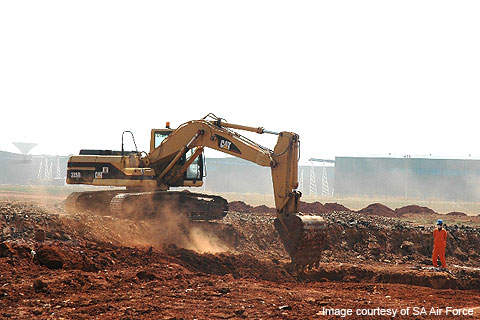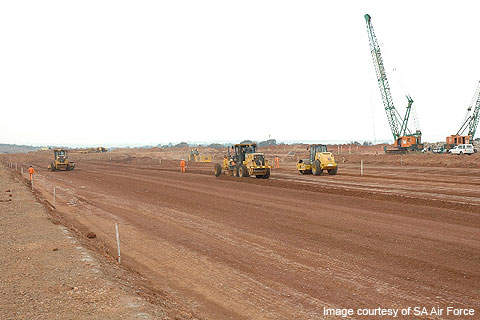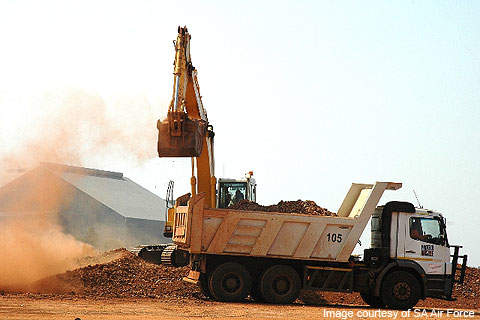Waterkloof is the South African Air Force’s (SAAF) busiest air force base (AFB). It is located in the town of Centurion in Gauteng Province. Previously known as Waterkloof Air Station, the base was officially opened in August 1938.
The base serves and manages the Ditholo training area at Hammanskraal in northern Gauteng and incorporates Swartkop AFB, one of the oldest operational air stations in the world.
Besides military air transport services to the SAAF, the base has also been involved in commercial aircraft and humanitarian operations.
Waterkloof AFB history
AFB Swartkop was established in 1921. Waterkloof air station was initially used as a forced landing field. During World War II, the field was expanded and an aerodrome, Waterkloof Air Station, opened in 1938.
Waterkloof subsequently became the primary AFB for the SAAF, while AFB Swartkop was used for training personnel and maintaining aircraft. The Waterkloof base underwent major renovations in 1950s, during which time AFB Swartkop acted as the main air base. The renovation included the construction of tarmac runways to enable the landing of jet fighters.
SAAF was expanded during the 1960s and 1970s. In 1990, the SAAF Reaction Force was established at the base.
Design and construction
Waterkloof is undergoing development to meet international standards. This includes the construction of a runway, taxiway and A400M facility. Initially built for medium-sized aircraft such as the Hercules C130, the base currently serves large commercial and cargo aircraft. The four-phase project will allow the base to accommodate the Boeing 747-400, Airbus A380 and Airbus A400M.
In June 2008, the Department of Public Works awarded a phase 1 project contract to a consortium to upgrade the main runway and taxiways at the base. The consortium included Protech Khu, Mvela Phanda Construction and Gerolemou Construction.
Construction on the main runway – runway 0119 – began in July 2008. The runway was opened in October 2009. The work involved about 950,000m³ of mass earthworks, 33,350m³ of asphalt base and surfacing, 23,000m³ of concrete raft foundation and 135km of HDPE piping.
The $95m first phase followed an environmental management plan commissioned by the Department of Public Works in collaboration with independent consultants and approved by the Environmental Affairs and Tourism.
Garrison facilities
The squadrons at the base include 1 Air Servicing Unit, 5 Air Servicing Unit, 17 Squadron, 21 Squadron, 28 Squadron, 41 Squadron, 44 Squadron, 60 Squadron, 104 Squadron, 111 Squadron and 504 Squadron. The base also has a SAAF telecommunications centre, an electronic warfare centre, a joint air reconnaissance intelligence centre, the central photographic institute and a command and control school.
Air facilities
The base has two runways (01/19 and 06/24), fuel supplies equipment and communication facilities. It can accommodate aircraft such as the PC-12M, Boeing 737-7ED (BBJ), 208 Caravan, Oryx, B200 Super King Air, 550/1 Citation II, Falcon 900B, Falcon 50, C 212 Aviocar, C-130B/BZ Hercules, CN 235 and A109 LUH.
Future Waterkloof development
Phases 2 and 3 of the project will include upgraded taxiways, an A400M strategic airlift facility and an upgraded secondary runway. Phase 4 will involve the installation of electrical work on runway 0119 and taxiways on runway 0624. The project is scheduled for completion in 2011. The runways, taxiways and airsides will have several features such as an a early warning system to notify against possible soil instabilities and sinkholes. They will also feature an upgraded runway lighting system.










